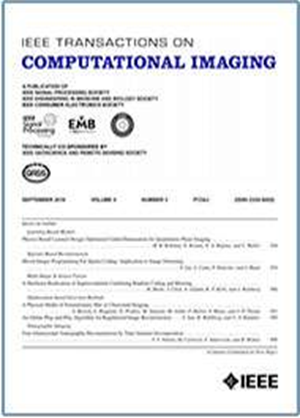Iterative Collaboration Network Guided by Reconstruction Prior for Medical Image Super-Resolution
IF 4.8
2区 计算机科学
Q2 ENGINEERING, ELECTRICAL & ELECTRONIC
引用次数: 0
Abstract
High-resolution medical images can provide more detailed information for better diagnosis. Conventional medical image super-resolution relies on a single task which first performs the extraction of the features and then upscaling based on the features. The features extracted may not be complete for super-resolution. Recent multi-task learning, including reconstruction and super-resolution, is a good solution to obtain additional relevant information. The interaction between the two tasks is often insufficient, which still leads to incomplete and less relevant deep features. To address above limitations, we propose an iterative collaboration network (ICONet) to improve communications between tasks by progressively incorporating reconstruction prior to the super-resolution learning procedure in an iterative collaboration way. It consists of a reconstruction branch, a super-resolution branch, and a SR-Rec fusion module. The reconstruction branch generates the artifact-free image as prior, which is followed by a super-resolution branch for prior knowledge-guided super-resolution. Unlike the widely-used convolutional neural networks for extracting local features and Transformers with quadratic computational complexity for modeling long-range dependencies, we develop a new residual spatial-channel feature learning (RSCFL) module of two branches to efficiently establish feature relationships in spatial and channel dimensions. Moreover, the designed SR-Rec fusion module fuses the reconstruction prior and super-resolution features with each other in an adaptive manner. Our ICONet is built with multi-stage models to iteratively upscale the low-resolution images using steps of基于先验重构的医学图像超分辨率迭代协同网络
高分辨率医学图像可以为更好的诊断提供更详细的信息。传统的医学图像超分辨率依赖于一个单一的任务,即首先进行特征提取,然后根据特征进行升级。对于超分辨率,提取的特征可能不完整。最近的多任务学习,包括重建和超分辨率,是获得额外相关信息的好方法。两个任务之间的交互往往不足,这仍然导致深度特征不完整和相关性较低。为了解决上述限制,我们提出了一个迭代协作网络(ICONet),通过在超分辨率学习过程之前以迭代协作的方式逐步纳入重建来改善任务之间的通信。它由一个重建分支、一个超分辨率分支和一个SR-Rec融合模块组成。重建分支生成无伪像的先验图像,重建分支生成先验知识引导下的超分辨率图像。与广泛使用的卷积神经网络用于提取局部特征和具有二次计算复杂度的变压器用于建模远程依赖关系不同,我们开发了一种新的两个分支的剩余空间通道特征学习(RSCFL)模块,以有效地建立空间和通道维度的特征关系。此外,设计的SR-Rec融合模块以自适应方式将重建先验特征和超分辨率特征融合在一起。我们的ICONet是用多阶段模型构建的,使用${2 \times}$的步长迭代升级低分辨率图像,并在多阶段监督中同时在两个分支之间进行交互。在基准测试数据集上的定量和定性实验结果表明,我们的ICONet优于大多数最先进的方法。
本文章由计算机程序翻译,如有差异,请以英文原文为准。
求助全文
约1分钟内获得全文
求助全文
来源期刊

IEEE Transactions on Computational Imaging
Mathematics-Computational Mathematics
CiteScore
8.20
自引率
7.40%
发文量
59
期刊介绍:
The IEEE Transactions on Computational Imaging will publish articles where computation plays an integral role in the image formation process. Papers will cover all areas of computational imaging ranging from fundamental theoretical methods to the latest innovative computational imaging system designs. Topics of interest will include advanced algorithms and mathematical techniques, model-based data inversion, methods for image and signal recovery from sparse and incomplete data, techniques for non-traditional sensing of image data, methods for dynamic information acquisition and extraction from imaging sensors, software and hardware for efficient computation in imaging systems, and highly novel imaging system design.
 求助内容:
求助内容: 应助结果提醒方式:
应助结果提醒方式:


